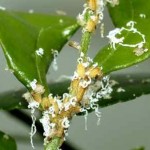
A huanglongbing (HLB) technology summit earlier this month stressed the need for citrus growers to take Asian citrus psyllid (ACP) and HLB prevention strategies seriously.
HLB Prevention as Insurance Policy
An HLB infected tree can sometimes take a couple of years to show up as positive on the current test. With the outbreak of trees testing positive in the residential area of San Gabriel in Los Angeles County, experts stress the need for citrus growers to spend the money upfront to keep the pest that spreads the disease at bay. University of California-Davis associate professor Neil McRoberts says growers need to look at it like an insurance policy.
More on ACP management
In response to the establishment of ACP in California, the California Department of Food and Agriculture (CDFA) initiated an extensive monitoring program to track the distribution of the insect and disease. This program involves CDFA and other personnel regularly checking thousands of yellow sticky traps for the psyllid, in both residential areas and commercial citrus groves, in locations where the psyllid may be spreading. The program also includes frequent testing of psyllids and leaf samples for the presence of the pathogen.
Results are being used to delimit quarantine zones, guide releases of biological control agents, and prioritize areas for a residential chemical control program. As the psyllid has spread into new areas, monitoring and control resources have been reallocated. In some areas, home gardeners will need to take an active role in monitoring for the psyllid and disease, and take steps to protect their own trees. Read more from the UC Integrated Pest Management website.









